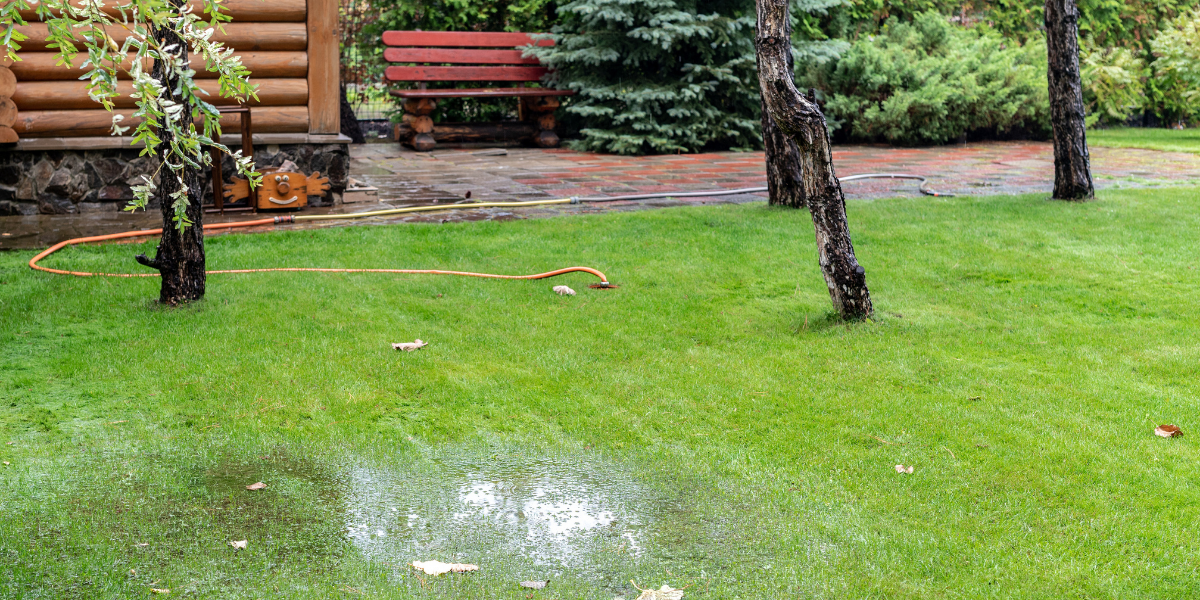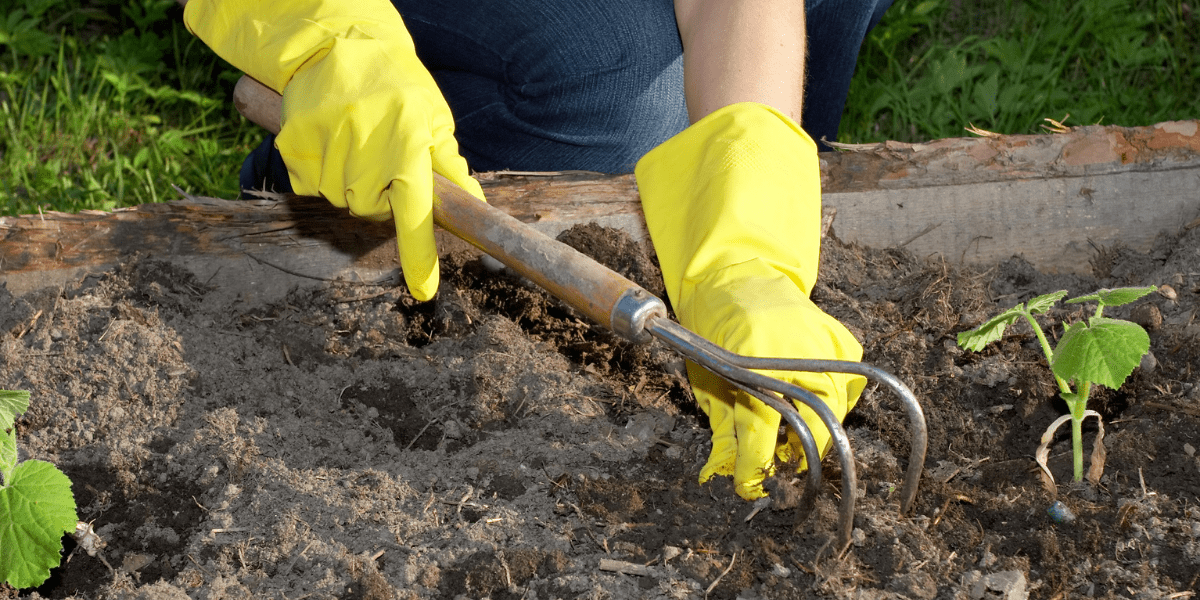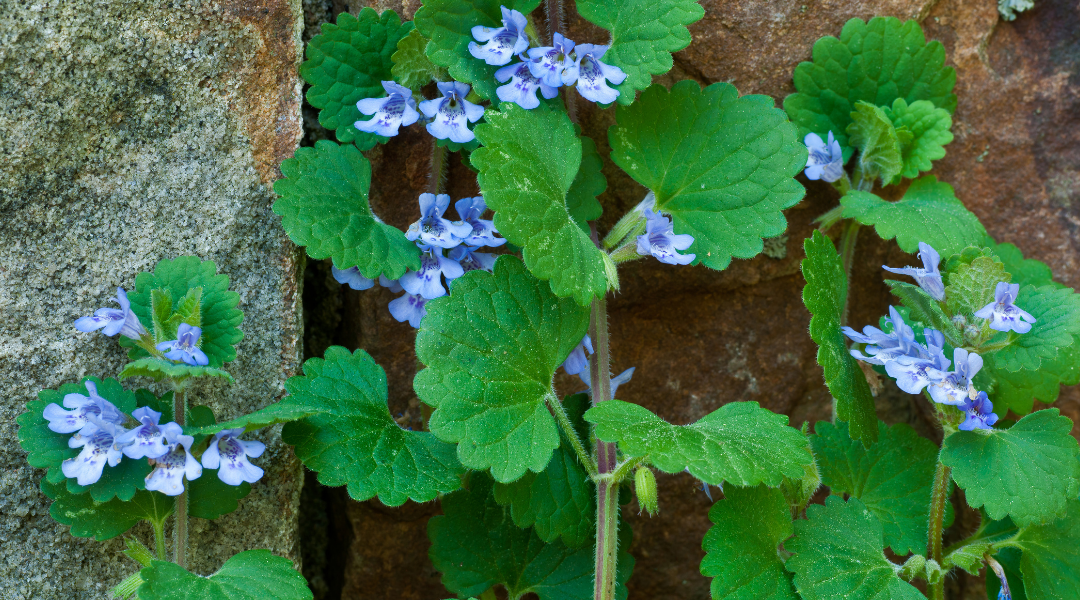Creeping Charlie, also known as ground ivy, was brought to North America by Europeans as a medicinal herb and ornamental plant. Since then, it’s spread across the country in disturbed sites, natural areas, and most commonly, in lawns. It can reproduce from any small fragment of root, making it a tough plant to get rid of. But there are ways to remove it from your lawn!

How to Identify Creeping Charlie
Before we start, let’s identify what we’re dealing with. Creeping Charlie is a groundcover from the mint family that has opposite, round leaves with scalloped edges. The stems are square, and it has small purple flowers in the spring. When crushed, it smells like tangy mint.

How to Slow the Spread of Creeping Charlie
Before we even begin to remove Creeping Charlie, let’s eliminate the conditions that make it thrive. Since Creeping Charlie loves moist areas, you can knock it back by reducing over-watering and even keeping your lawn a little dry. Since it also thrives in the shade, you can prune back surrounding trees or shrubs to give your yard more sunlight. Finally, you can give your grass the upper hand by overseeding with fresh grass seed and letting it grow 2-3 inches between mowings. These small changes will not eradicate Creeping Charlie, but will slow its growth and rate of spreading.
How to Remove Creeping Charlie by Hand
Even though it spreads easily by the root, it’s still possible to remove Creeping Charlie by hand, although it does take repeated attempts. Here are steps to make the process as easy as possible:
- Soak the area with a hose 30 to 60 minutes before you begin weeding.
- Loosen the soil with a pitchfork.
- Remove Creeping Charlie, including the entire root, with a pitchfork or hand weeder.
- Watch for any plants that return and keep removing them until they’re gone from your lawn.

How to Smother Creeping Charlie
Smothering Creeping Charlie is a way to weaken or kill the plant prior to removing it. Simply cover it with newspaper or a tarp to block off airflow and sunlight. This makes it easier to uproot, and reduces the chance that it will return. Of course, the only problem is that you’ll kill sections of your grass as well. But it’s easy to reseed fresh grass afterward, and you’ll enjoy a thriving lawn again in no time.
Using Herbicides on Creeping Charlie
Creeping Charlie can also be eliminated with post-emergence, broadleaf herbicides. These target broadleaf plants, while leaving your grass intact. However, they do come with risks, such as harming or killing untargeted insects, birds, or wildlife that use your yard. And as with any chemical treatment, be sure to follow the instructions, and refrain from spraying near vegetable gardens, or play areas for children and pets.

Alternative: A Biodiverse Yard
As many people are now welcoming biodiversity back into their landscapes, they’re beginning to appreciate the beauty of a diverse lawn. They’re wondering if a patch of clover here or Creeping Charlie over there is really a problem. In fact, these plants do provide flowers for pollinators, and a habitat for insects, which in turn attract birds. Plus, the blossoms bring color and fragrance to us as well.
That doesn’t mean you should let Creeping Charlie take over the whole yard. Weeding is still necessary to keep invasive plants in check. But people are expanding their concepts of a healthy yard and realizing that it doesn’t have to be pure grass. After all, Creeping Charlie was brought here because of its value as a herb and medicinal plant. Perhaps it’s really a gift that has shown up right at our doorsteps.
The choice is up to you. But no matter your approach, there are many smart ways to manage Creeping Charlie and other weeds, and to keep your yard the way you want it. For more expert advice on landscaping and all the supplies you need, visit our garden centers in Chicagoland!
Platt Hill Nursery is Chicago’s premier garden center and nursery.


